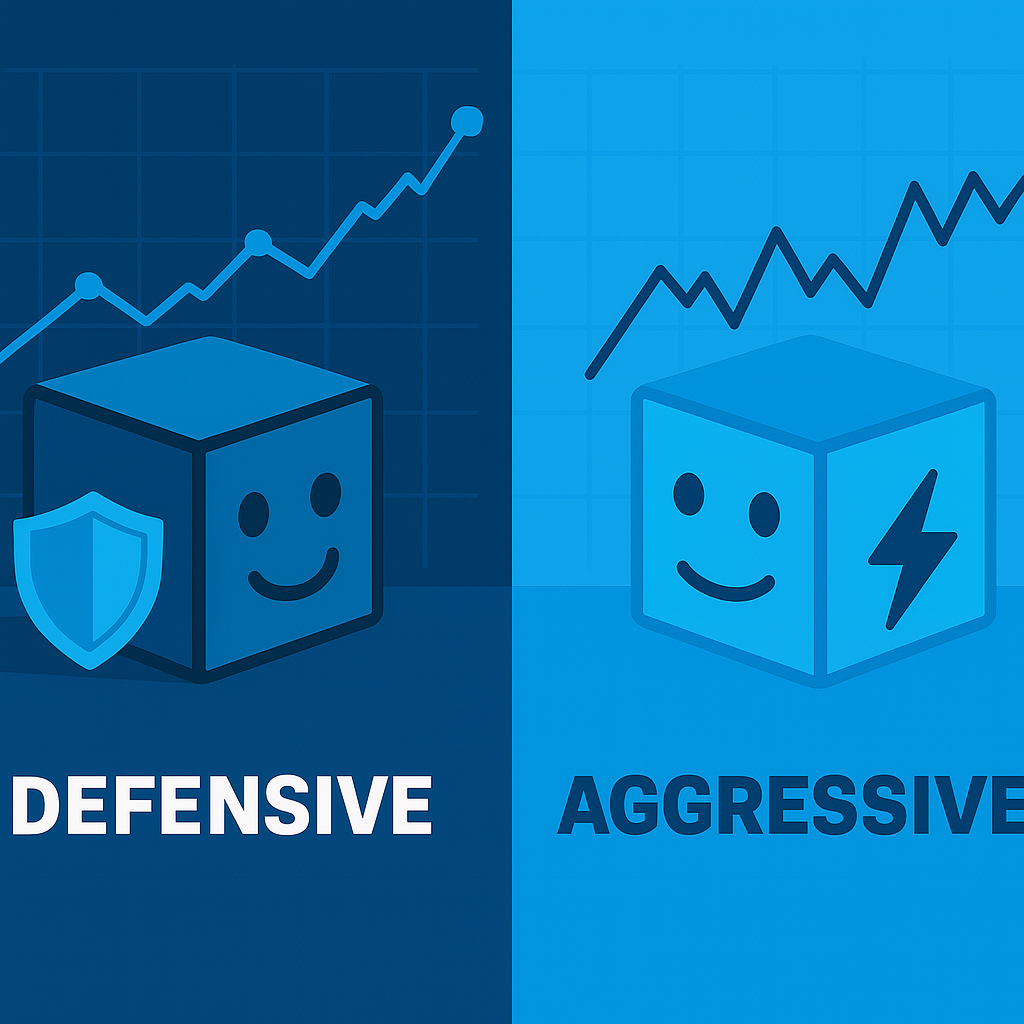
When exploring different trading robots on platforms like tradEASy, it’s common to find strategies that operate in very different ways. Some make fewer trades, seek more moderate profits, and prioritize risk control. Others, however, trade more frequently, seek larger movements, and accept a higher level of exposure. This difference relates to the robot’s operating profile, which can be classified as defensive or aggressive.
Defensive strategies
Defensive robots are more cautious about market conditions. They use highly filtered signals, avoid trading during periods of high volatility, and focus on protecting capital. They typically work with small lots, low leverage, and tight stop losses. Their goal is to achieve stable long-term results, even if that means lower profits.
Aggressive strategies
In contrast, aggressive robots take a bolder approach. They trade with more frequent signals, use larger positions, and seek to take advantage of strong market movements, often on shorter timeframes. They can generate larger profits when the market favors them, but they also have a higher risk of losses if the market goes against them.
How to identify the robot profile?
To tell if a robot is defensive or aggressive, you can look at several key points:
- Average volume per operation
- Leverage level
- Frequency of operations
- Drawdown
- Win rate
In general, defensive robots will show more stable performance curves with fewer ups and downs, while aggressive robots will have more variable results, both in profits and losses.
Choose according to your profile
The choice between a conservative or aggressive strategy depends on factors such as your capital, risk tolerance, and investment horizon.
- If you have a small account or prefer to avoid large fluctuations, a defensive strategy can give you more peace of mind.
- If you’re willing to take on more risk in exchange for a potential higher return, an aggressive strategy may be an option, as long as you’re prepared to face temporary setbacks.
And why not both?
It’s also possible to combine both approaches in a single portfolio. For example, you can use defensive robots as a foundation to maintain stability and add aggressive strategies at key market moments, such as during clear trends or controlled high volatility. This allows you to take advantage of different scenarios and better spread risk.


